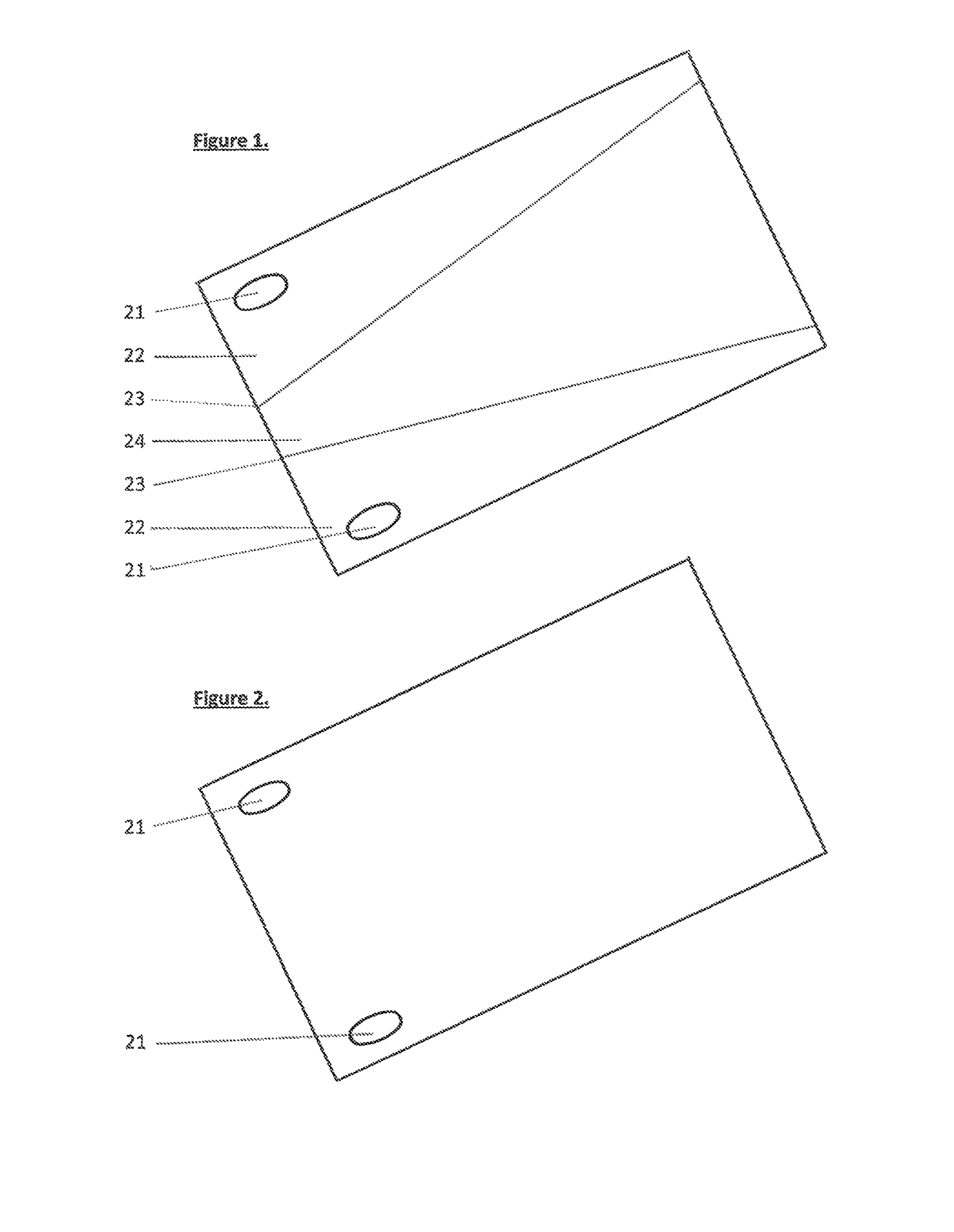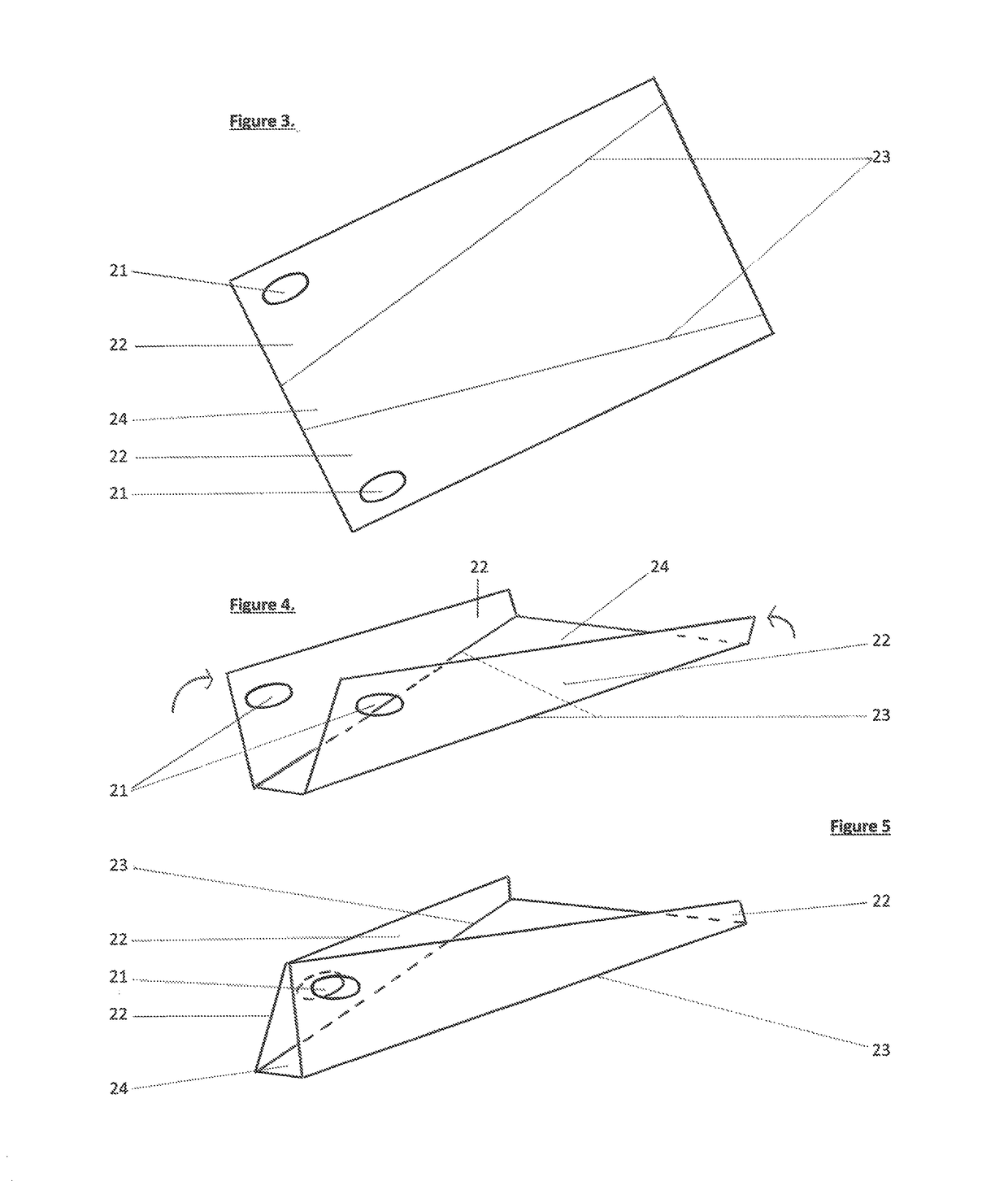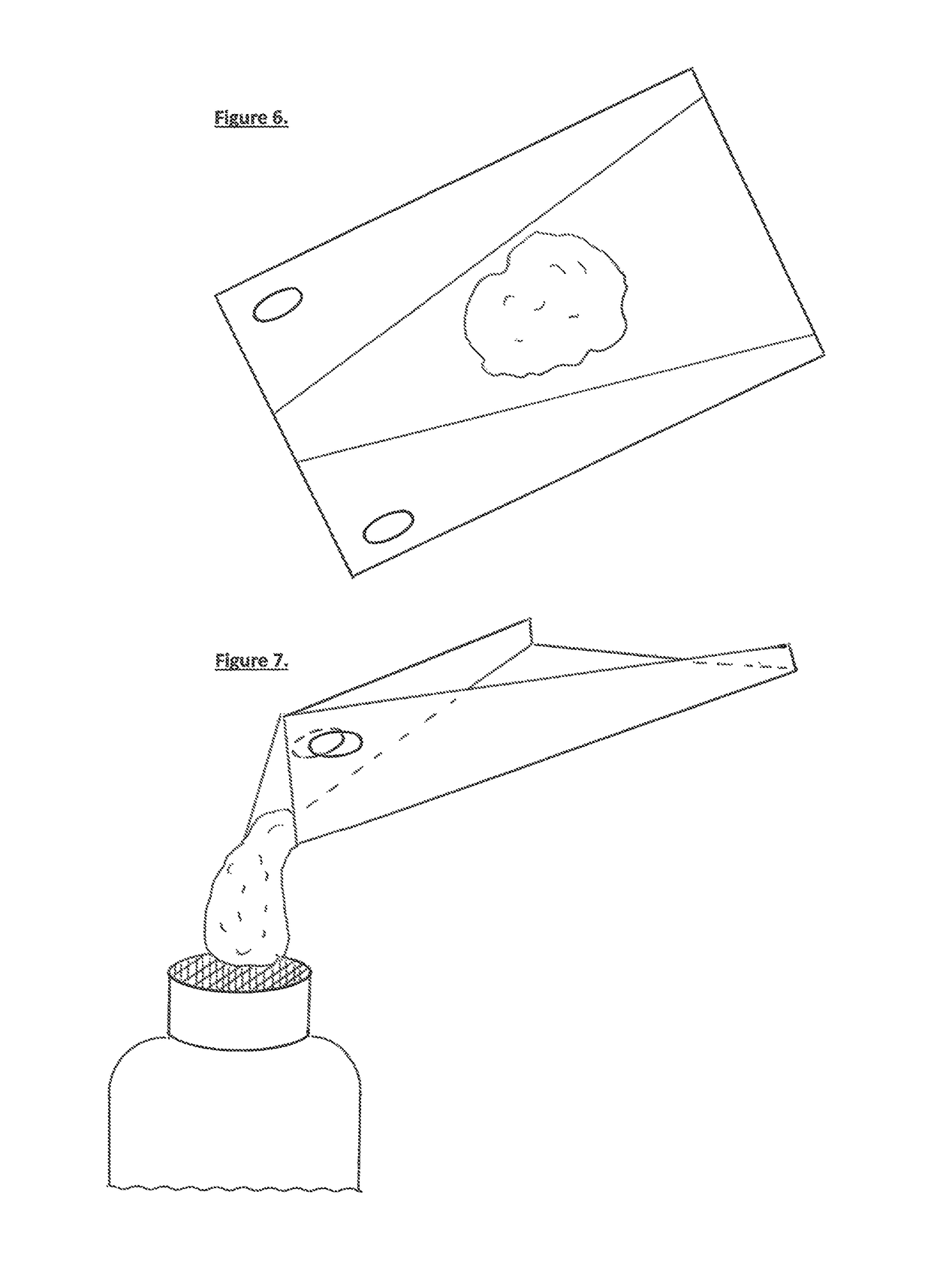Thin chopping and slicing board that facilitates easy transfer of prepared ingredients
- Summary
- Abstract
- Description
- Claims
- Application Information
AI Technical Summary
Benefits of technology
Problems solved by technology
Method used
Image
Examples
Embodiment Construction
[0027]The following detailed description is of the best currently contemplated modes of carrying out exemplary embodiments of the invention. The description is not to be taken in a limiting sense, but is made merely for the purpose of illustrating the general principles of the invention, since the scope of the invention is best defined by the appended claims.
[0028]Broadly, embodiments of the present invention provide a system, a method, and apparatus to facilitate preparation (cutting, chopping, crushing) of foods on a flat surface with a design that allows transfer to virtually any-dimensioned bowl or other receiving vessel. Further, it seeks to accomplish this in an economic fashion with simplicity of design.
[0029]In one embodiment, the cutting board would be produced from a thin, flexible sheet of material such as plastic with durable nature and hardness suitable for cutting without dulling a knife or other utensil. Essential qualities include ease of washing as well as resistanc...
PUM
 Login to View More
Login to View More Abstract
Description
Claims
Application Information
 Login to View More
Login to View More - R&D
- Intellectual Property
- Life Sciences
- Materials
- Tech Scout
- Unparalleled Data Quality
- Higher Quality Content
- 60% Fewer Hallucinations
Browse by: Latest US Patents, China's latest patents, Technical Efficacy Thesaurus, Application Domain, Technology Topic, Popular Technical Reports.
© 2025 PatSnap. All rights reserved.Legal|Privacy policy|Modern Slavery Act Transparency Statement|Sitemap|About US| Contact US: help@patsnap.com



